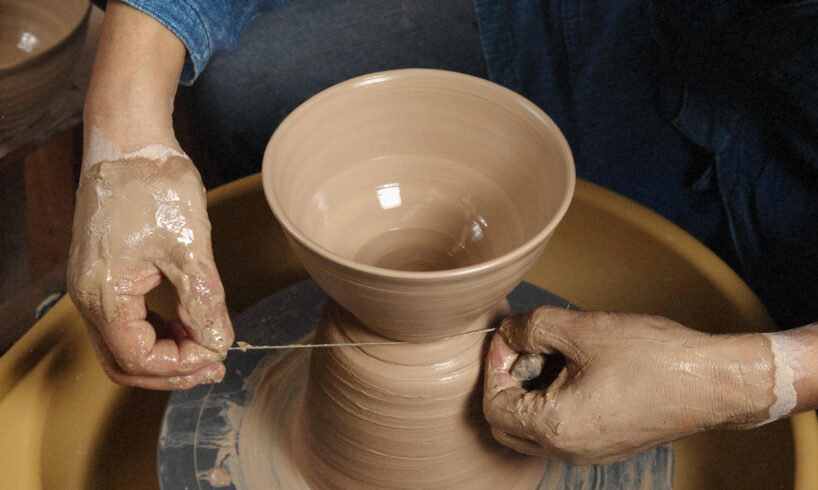
Japan is a country of National Treasures. From clay figurines dating back thousands of years to intricate lacquerware, mountain pagodas, castle keeps and the largest wooden building in the world, the “treasures” of Japanese culture are aptly named because there is a wealth of them. There are even National Treasures you can talk to (which admittedly is true for all of them) and expect them to answer back (which admittedly is very rare). They are the Living National Treasures of Japan: masters of highly prized arts, crafts and performing arts who safeguard the country’s traditional culture. Here’s everything you need to know about them.
Guardians, Not Celebrities
Living National Treasures (Ningen Kokuho) are officially certified as “Holders of Important Intangible Cultural Properties,” meaning their unique abilities. The LNT recognition by the Minister of Education, Culture, Sports, Science and Technology names a person but ultimately celebrates a skill that the honoree is preserving for future generations. That’s why the LNT certifications also include categories for small and large groups of artisans.
The history of the program dates back to the mid-20th century and stems from Nara’s Horyu-ji temple, home to the world’s oldest surviving wooden structures. After a fire seriously damaged priceless murals in the temple’s main hall, the Japanese government realized that there were precious few people out there who could repair or replicate this seventh- and eighth-century art. This, plus the devastation caused by World War II, made Japan start to think that cultural heritage isn’t just something you can touch.
And so, in 1955, five years after the government passed the Law for the Protection of Cultural Properties, it recognized the first cohort of people who are living repositories of invaluable knowledge about everything from noh or kabuki theater to imperial court music, ceramics, swordsmithing, bamboo craft and so much more. However, their expertise cannot be purely theoretical.
Living National Treasures Must Live a Life of Creation
Besides bragging rights about being a National Treasure (and all the free drinks that probably gets you), recipients of the LNT certification are also granted ¥2 million per year by the Japanese government. That’s about $13,500 as of June 2025. Possible to live on but far outside luxury’s ZIP code. That’s fine, though, because these master artists also have day jobs. They’re required to.
Besides mentoring apprentices and documenting their processes, LNTs must also actively be performing or showcasing their art. The government stipend only aims to cover basic living expenses so that talented people can focus on their important work and keep making contributions to art and history, like by helping restore techniques that were once thought to be lost to time. For example, Hiromichi Osaka, a woodworker and a Living National Treasure, discovered how ancient Nara artisans created intricate patterns on rosewood boxes — it turns out it was tin inlays.
It’s a Very Exclusive Club
The maximum number of Living National Treasures is capped at 116. The only way to get on the list when it’s full is to first be amazing at a traditional Japanese craft or performing art and then wait for someone whom you probably deeply admire to, well, die. (As of July 2024, there were 108 Living National Treasures.) Also, you need to be able to teach what you know to the next generation.
You’re likely familiar with this old saying: “Those who can, do; those who can’t, teach.” But to be an LNT, you have to be able to do both. That’s why the vetting process even takes into account a candidate’s number of apprentices. National Treasures are to be shared with the whole world, after all.
This is the core of a big criticism that some have aimed at the program. If Living National Treasures are so important to the soul of Japan, why is there a limit on their number? This has caused some masters to be overlooked in the past simply because there wasn’t room in their LNT category, even if their particular talent had a unique quality to it. Perhaps as a result, not everyone considers being named a National Treasure a great honor. In 1959, Kitaoji Rosanjin, an artist who excelled at ceramics, calligraphy and lacquerware, was named a Living National Treasure but ultimately declined the title.
The Future
Some may argue that a hyperfocus on tradition and history can lead to a stifling of innovation, but the Living National Treasure program isn’t averse to change. In 2026, they will be adding a new category: chefs and sake brewers. There are also talks of recognizing living regional treasures so that more talent can be preserved and transmitted.
The Living National Treasure initiative has also inspired programs in China, Korea, the Philippines, Australia and Ireland, so while it may not be perfect, it does seem to be putting a lot of good out into the world. Hopefully, it’ll continue to do so for the foreseeable future.





